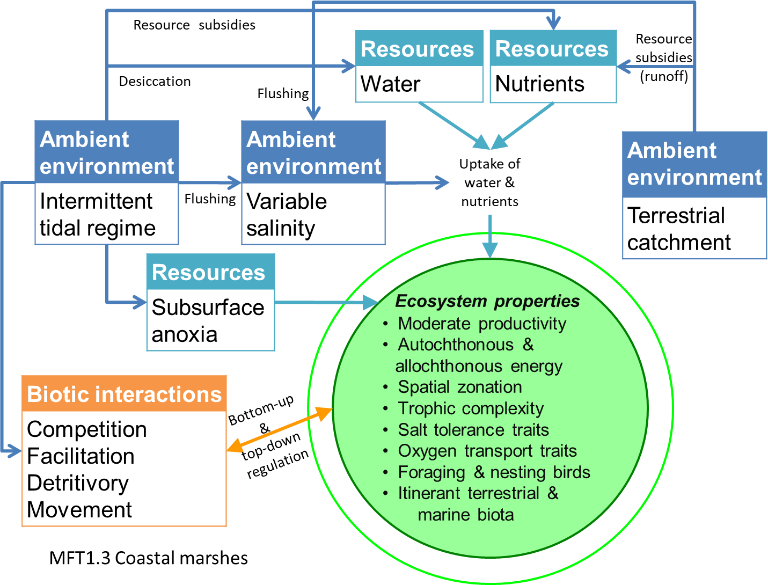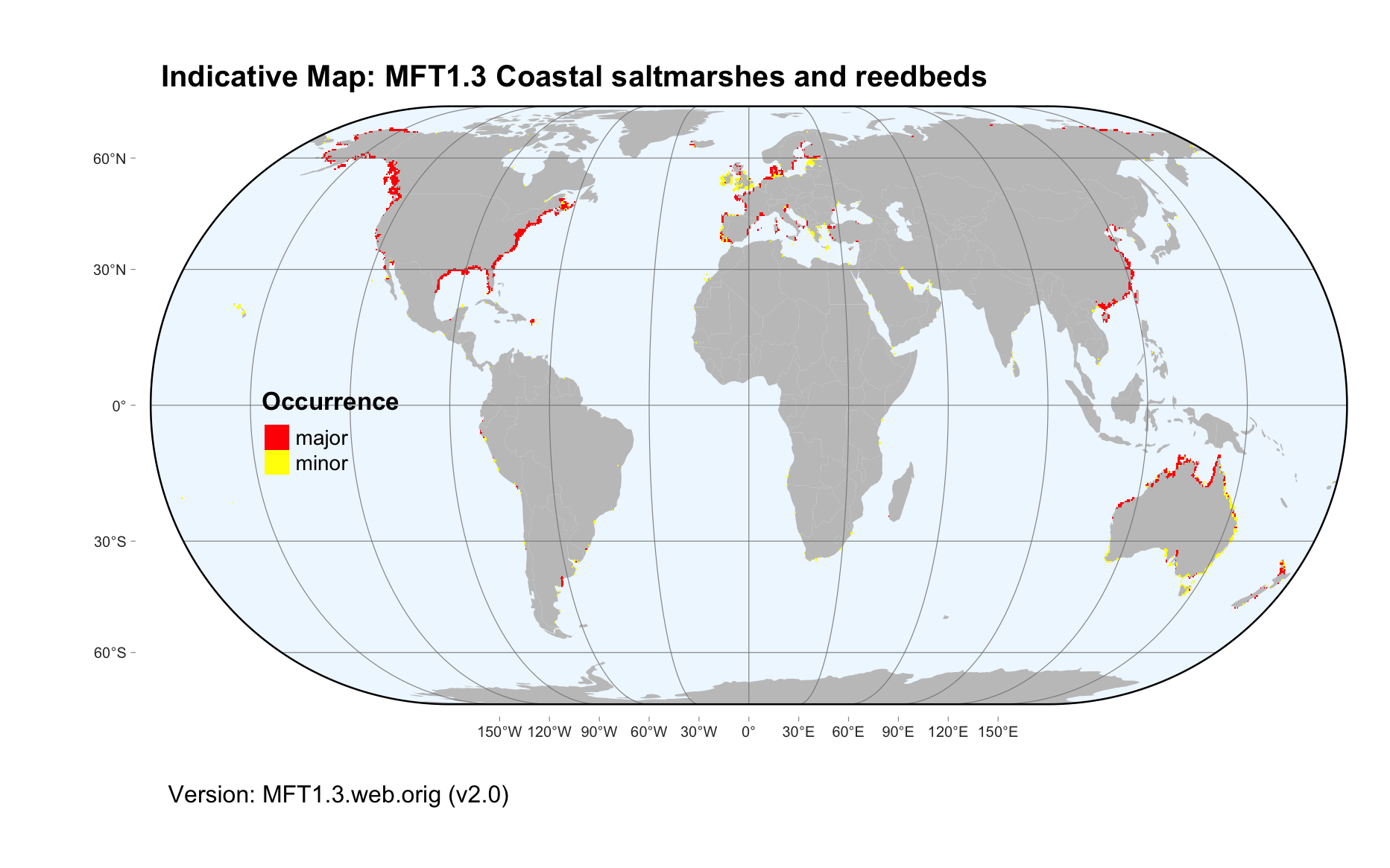Global ecosystem typology
Alternative site for the Global ecosystem typology with additional information for ecosystem profiles and indicative maps.
This site is maintained by jrfep
MFT1.3 Coastal saltmarshes and reedbeds
Biome: MFT1. Brackish tidal biome
Contributors:
(texts)
Coastal salt marshes and reedbeds are mosaics of salt-tolerant grasses and low, typically succulent shrubs. structured by strong gradients of salinity and tidal influence. Salts may approach hypersaline levels near the limit of high spring tides, especially in the tropics. As well as larger plants, algal mats and phytoplankton contribute to productivity, while freshwater run-off and tides bring organic material and nutrients. Bacteria and fungi decompose biomass in oxygen-poor subsoils, and support a range of crustaceans, worms, snails and small fish. Shorebirds breed and forage in saltmarshes, with migratory species dispersing plants and animals.
Key Features
Variable salinity tidal system dominated by salt-tolerant plants, with invertebrates, small/juvenile fish and birds..
Overview of distribution
Mostly low energy coasts from tropical to arctic and subantarctic latitudes.
Profile versions
- v1.0 (2020-01-20): DA Keith; MJ Bishop
- v2.0 (2020-05-29): DA Keith; AH Altieri; J Loidi; MJ Bishop
- v2.01 ():
- v2.1 (2022-04-06): DA Keith; AH Altieri; J Loidi; MJ Bishop Full profile available at official site
Main references
Selected references for this functional group:
Adam P (1990) Saltmarsh ecology Cambridge University Press, Cambridge DOI:10.1017/CBO9780511565328
Jefferies RL, Jano AP and Abraham KF (2006) A biotic agent promotes large-scale catastrophic change in the coastal marshes of Hudson Bay Journal of Ecology 94, 234–242 DOI:10.1111/j.1365-2745.2005.01086.x
Bertness MD, Shumway SW (1993) Competition and facilitation in marsh plants American Naturalist 142, 718-724 DOI:10.1086/285567
Diagrammatic assembly model

Maps
Maps are indicative of global distribution patterns are not intended to represent fine-scale patterns. The maps show areas of the world containing major (coloured red) or minor occurrences (coloured yellow) of each ecosystem functional group. See general notes on maps.
There are 2 alternative versions of the indicative map for this functional group, please compare description and sources below.
MFT1.3.IM.orig_v1.0
Datasets
- GlobalSaltmarshes2017
Map references
McOwen CJ, Weatherdon LV, van Bochove JW, Sullivan E, Blyth S, Zockler C, Stanwell-Smith D, Kingston N, Martin CS, Spalding M, Fletcher S (2017) A global map of saltmarshes Biodiversity Data Journal 5: e11764 DOI:10.3897/BDJ.5.e11764
MFT1.3.web.orig_v2.0

Datasets
- GlobalSaltmarshes2017
Map references
McOwen CJ, Weatherdon LV, van Bochove JW, Sullivan E, Blyth S, Zockler C, Stanwell-Smith D, Kingston N, Martin CS, Spalding M, Fletcher S (2017) A global map of saltmarshes Biodiversity Data Journal 5: e11764 DOI:10.3897/BDJ.5.e11764
Check: the Glossary / Profile structure / the public document